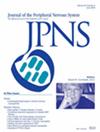Genetic Deletion of Sarm1 in Mouse Models of Three Neurological Diseases
Abstract
Background
Degeneration of peripheral motor and sensory axons is a key aspect of the pathophysiology of Charcot–Marie–Tooth disease and related inherited neurodegenerative conditions.
Aims
Given that mutations in many (> 100) genes can cause these disorders, it is unclear if a generalized therapeutic strategy can be identified that will apply across these disease subtypes; however, strategies to prevent or slow axon degeneration are attractive candidates. Wallerian axon degeneration is an active process following insults such as nerve injury, and SARM1 is a central mediator of this process. When SARM1 is inhibited, axons distal to the site of injury persist for weeks rather than degenerating. In addition, SARM1 inhibition or genetic deletion has been shown to provide benefit in acquired neuropathies such as diabetic/metabolic neuropathy and chemotherapy-induced neuropathy in animal models. Here we examined the effects of genetically deleting Sarm1 in mouse models of CMT.
Methods
We bred knockout mice lacking Sarm1 to three different mouse models of CMT or related disorders. These include mice lacking Gjb1, modeling CMT1X, mice with mutations in Kif1a, modeling hereditary sensory neuropathy IIC and spastic paraplegia type 30, and mice lacking Fig4, modeling CMT4J and Yunis-Varon syndrome. Clinically relevant outcomes measures including survival (Kif1a and Fig4), grip strength and motor behavior, peripheral neurophysiology, molecular biomarkers, and nerve histopathology were assessed for each model with and without Sarm1 expression.
Results
No improvement in the mutant phenotype was found for any model, although elevated levels of circulating neurofilament light chain levels were delayed in the Fig4 mice. Kif1a mice showed deficits slightly earlier in the absence of Sarm1.
Interpretation
While we found no benefit from deleting Sarm1 in these mouse models, they were chosen for their human disease relevance and not for biochemical indicators that SARM1 may be a good target. Thus, SARM1 inhibition may still be effective in other forms of inherited neuropathy, but additional research will be required to identify those candidate subtypes.

 求助内容:
求助内容: 应助结果提醒方式:
应助结果提醒方式:


